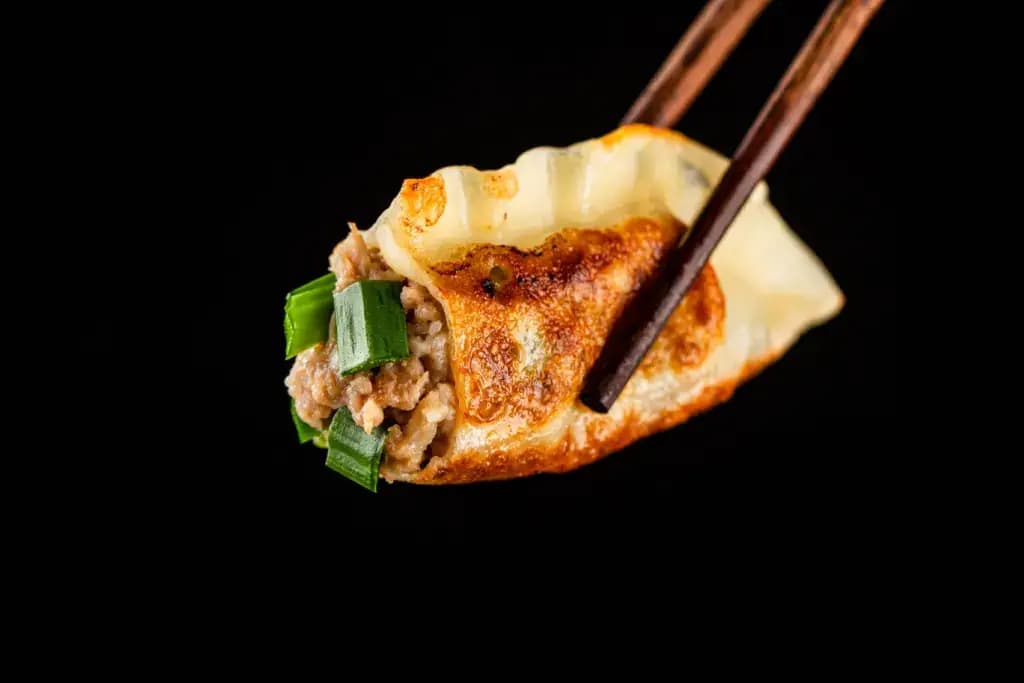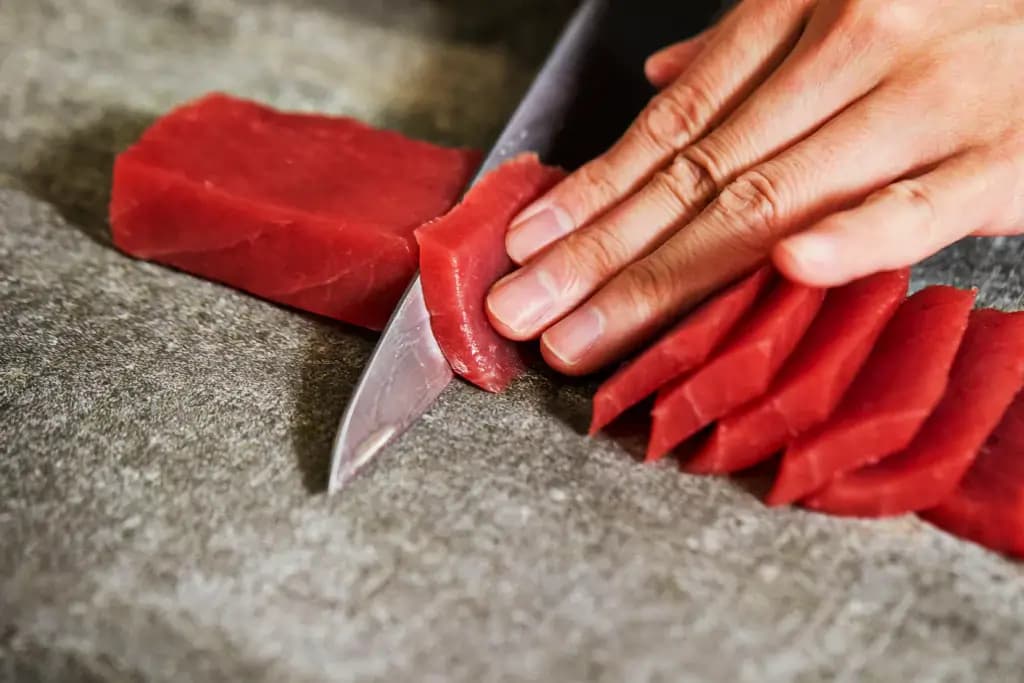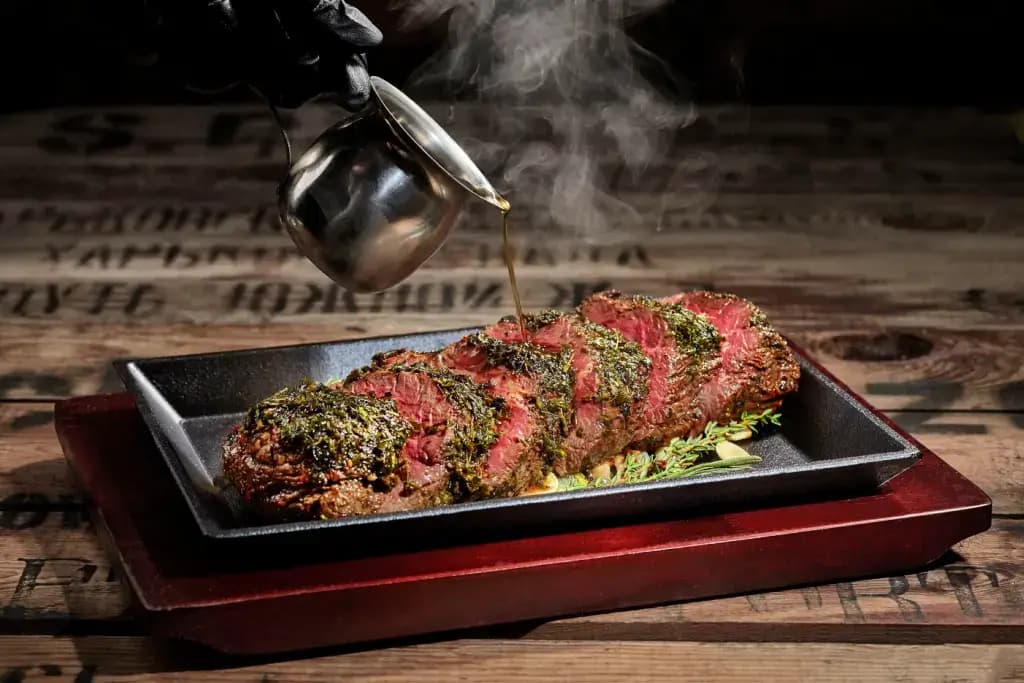
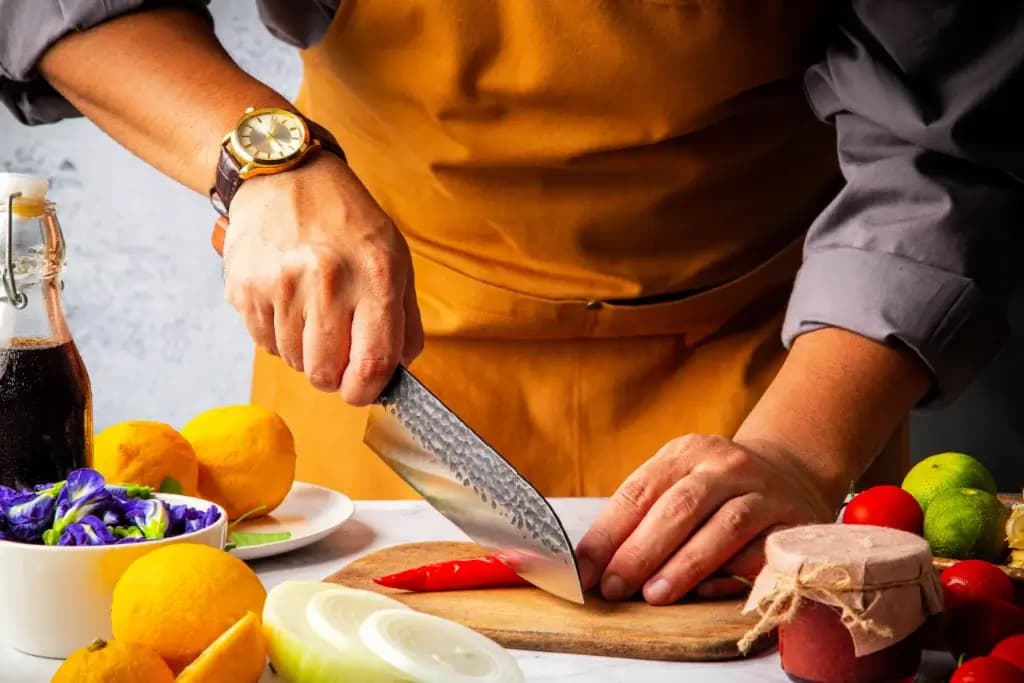
2025 SEPTEMBER 29
.Karina Ikedo
Hocho Knife: Learn Cutting Techniques!
Mastering Japanese cutting techniques like hocho sabaki (knife handling) can improve the taste and appearance of your cooking. These Japanese knife skills improve flavor, texture, and presentation by creating clean, even slices. Therefore, using the right method for each ingredient helps food cook evenly.
We’ll explore basic cuts like wagiri (round slices), koguchigiri (small pieces), usugiri (thin slices), and nanamegiri (diagonal cuts). You’ll also learn to handle a hocho like a pro in your kitchen. Keep reading to discover how these traditional Japanese cuts can upgrade your cooking skills and dishes.
Wagiri (round cut)
Wagiri, or the round cut, is one of the most straightforward yet essential techniques in Japanese cooking. This method slices cylindrical vegetables into neat round pieces, like cucumbers, carrots, daikon, and lotus root.
To make this cut, place the vegetable on a stable cutting board and hold it firmly with your guiding hand. Keep your fingers curled in the cat paw position, called neko no te, to stay safe while slicing. Use smooth, controlled strokes with your hocho, cutting straight across the vegetable.

The thickness of the slices depends on your dish. Thin slices work best for salads or pickles, while thicker ones suit simmered or stir-fried meals. Uniform slices help Japanese food cook evenly and make dishes look more polished. Thinner rounds also absorb marinades and seasonings faster, making them more flavorful.
Soaking eggplant or lotus root slices in water prevents discoloration and removes bitterness. Wagiri slices are commonly used in simmered dishes, tempura, oden, or fresh salads.
Koguchigiri (thin crosswise slices)
Koguchigiri is slicing long vegetables, like green onions, into thin, round pieces. This style is often used as a garnish to improve taste and appearance. To do this, line up the vegetables on a cutting board. Use a sharp hocho to cut them into small, even rounds about two to three mm thick. Try a gentle rocking motion for softer vegetables to keep the slices neat and controlled.
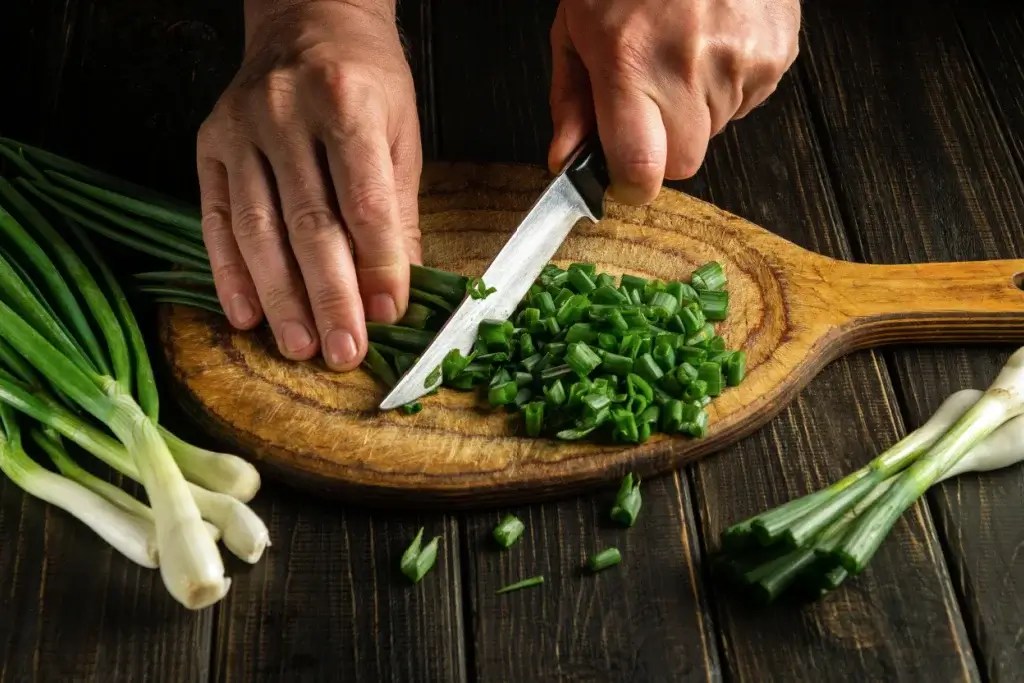
Use the slices right away for the freshest taste and brightest color. You can also separate the white and green onion parts for different flavors: white for a stronger taste and green for a lighter aroma. These thin slices are perfect for miso (fermenting soybeans) soup and hiyayakko (chilled tofu). They also work well with gyudon (beef bowl), cold soba (buckwheat noodles), and udon (thick wheat noodles) soup garnishes.
Are you looking for the best tools to perfect your cuisine? Check out ZAKU! ZAKU has authentic knives handmade in Japan for all of your culinary needs!

Thin Slices (usugiri)
Usugiri (thin slicing) is usually about 1–3 millimeters thick. This technique is perfect for quick cooking, marinating, and highlighting delicate textures. It works well with vegetables, leafy greens, and thin cuts of meat.

To make usugiri, slice the ingredients evenly and keep each piece as thin as possible. For vegetables, cut either crosswise or lengthwise, depending on the shape. When slicing meat, always cut against the grain so it stays tender.
Using a sharp hocho knife or mandoline helps you get consistent slices. Thinner cuts not only cook faster but also soak up flavors more effectively. If you soak vegetable slices in cold water, they stay crisp, perfect for salads and sunomono (vinegared dishes). Usugiri are often used in shabu shabu (hot pot), sukiyaki (beef hot pot), Japanese BBQ, pickles, and fresh salads.
Diagonal Cut (nanamegiri)
Nanamegiri (diagonal cut) is made by slicing ingredients at an angle, usually 30–45°. This cut increases surface area, helping food cook faster and soak up more flavor. It also makes dishes look more attractive.

To try this, tilt your hocho at the angle you want. Slice evenly along the ingredient, keeping the angle the same. Make sure the slices stay about three to five mm thick.
This cut works best for long or thin vegetables like carrots, cucumbers, and Tokyo negi (green onions). Diagonal slices cook evenly and add elegance to stir-fries, simmered dishes, and soups. Nanamegiri is often used in miso soup, stir-fries, simmered foods, and Japanese hot pots.
Why mastering hocho knife techniques matters
Japanese cutting techniques are more than cooking; they show respect for ingredients. Each cut changes taste, cooking, and appearance. A sharp hocho knife is essential. It helps you make precise, smooth, and even cuts every time.

Use the whole blade for clean slices. Keep your guiding hand in the cat paw position to protect fingers. Sharpen your knife often for safety and better results. Practicing these skills helps food look and taste amazing.
Tools and knives for hocho sabaki
Each Japanese knife has a special job. The yanagiba is best for slicing sashimi (thinly sliced raw fish) and delicate Japanese fish. The gyuto is a versatile meat, vegetable, and general cooking knife. The nakiri is perfect for chopping vegetables with straight, thin cuts. Picking the right knife makes cutting easier, safer, and more precise. Caring for the blade helps food look and cook its best.

Why should I use different cutting techniques?
Mastering basic Japanese cuts, wagiri, koguchigiri, usugiri, and nanamegiri, is key to authentic home cooking. With practice, your slices become precise, dishes cook evenly, and food looks beautiful. Next, you can learn techniques like kushigatagiri, mijingiri, and katsuramuki to improve your knife skills.
Overall, practice these basic cuts with your hocho knife and watch simple vegetables turn into elegant, tasty ingredients. What’s your favorite Japanese cut to practice? Which dish are you most excited to make with these skills? Share them in the comments below!











